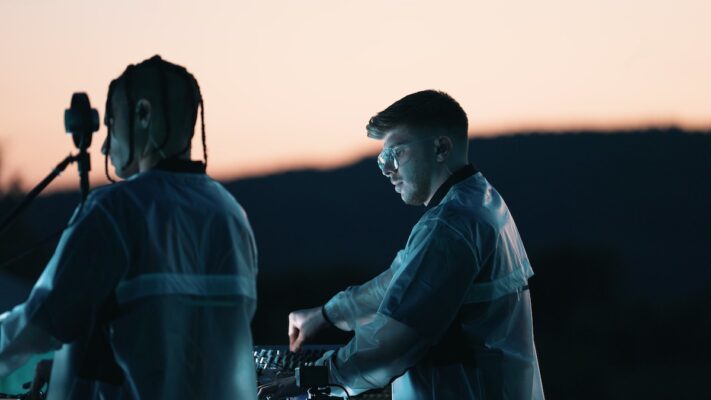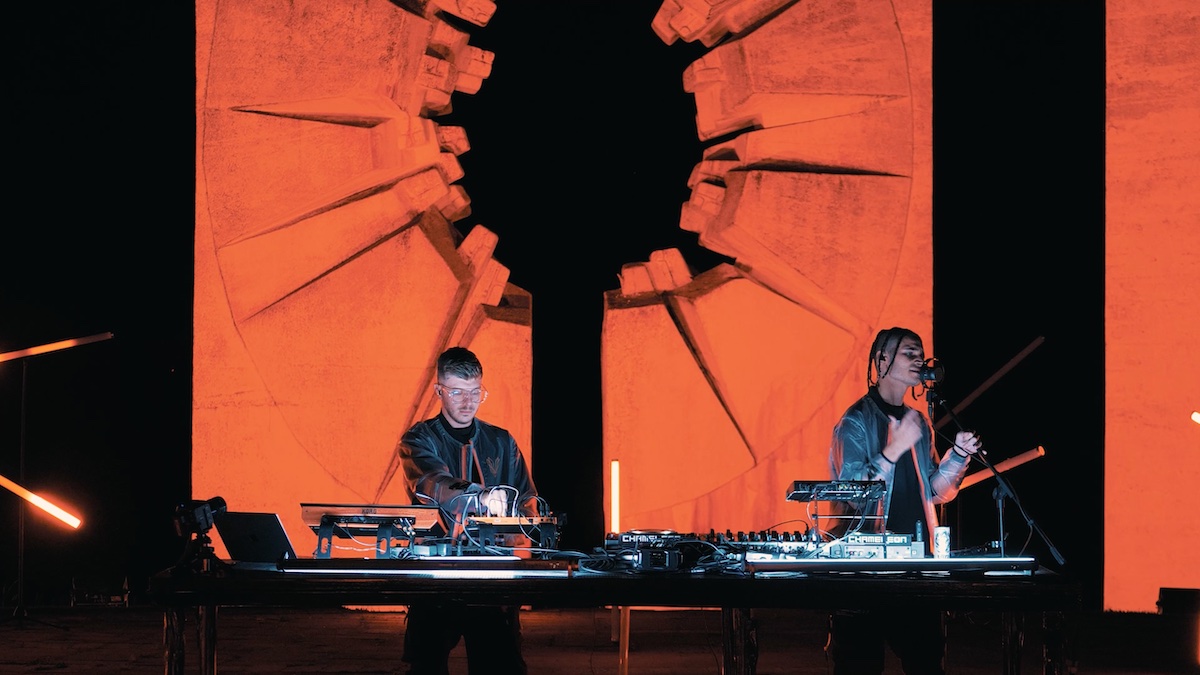In a time where performance often bends to the algorithm, UTOPIA dares to go deeper – crafting immersive, multi-sensory experiences that bridge music, memory, and monument. With their latest set at the hauntingly powerful Kadinjača Memorial, the duo continues their mission to fuse contemporary electronic music with culturally resonant spaces. We sat down with UTOPIA to explore the ritual behind the performance, the philosophy guiding their layered sound, and the intention behind transforming historical landmarks into living stages.
Your performances have been described as cinematic, even mythic. Do you see yourselves more as musicians, storytellers, or something in between?
We see ourselves as artists who use music as the main language we communicate with, but storytelling is anessential part of everything we do. We like to work with the complete picture of a project that, through music and visual art, completes a message within society.
This latest set at the Kadinjača Memorial feels more like a ritual than a typical live show. What drew you to that space, and how did its atmosphere shape the structure or mood of your performance?
Kadinjača carries that rare, almost sacred weight. We didn’t want to dominate the space, but rather adapt to it and put the focus on it. Our performance was a medium for everything around us.
You’ve developed such a layered hybrid format – live vocals, analog synths, visuals, reinterpretations. How did that evolve and what keeps you committed to this level of complexity in an age of fast, disposable content?
It came naturally, as a result of our experience and the need to move to the next level. We’re not obsessed with trends, although we must admit they do influence us as artists. This format challenges us, pushes us to grow, and makes us different. In a time when everything is “scrollable,” we choose to stop the attention and give it depth.
Kadinjača carries serious historical weight as a WWII memorial. How conscious were you of that legacy while composing or performing and how do you approach the tension between reverence and reinterpretation?
We were aware with every step. We used in-ear monitoring specifically to preserve the peace. It’s our attempt totranslate the past into today’s language without losing respect.
The visuals in this set feel inseparable from the music – there’s a harmony between sound, architecture and landscape. How do you build that relationship between the audio and the visual, and who do you collaborate with to make it feel so cohesive?
Everything starts from the location and its structure and symbolism become the foundation for sound and image. We work with CHAMELEON, a company with whom we’ve had a clear and shared vision from the beginning, and they are the best at what they do. In the case of Kadinjača, the brutalist architecture dictated the light layout. Everything is connected: music, camera movement, light. VIDDIM production has proven for years why they are considered one of the best in this part of Europe.

You’ve mentioned that this is part of a long-form project involving culturally charged sites across the region. What’s the bigger idea behind this series, and how do you choose where to go next?
The bigger idea is to connect contemporary electronic music with places of collective memory. To shine a new light on them. We choose locations that have strong symbolism and a visual identity, but also those that can “speak” in the present moment. Each set is like a new chapter, a different theme, but the same book.
Your music seems to move between club culture and something more introspective – like you’re tryingto communicate on multiple levels. Is that duality intentional, or just a by-product of your process?
It’s completely intentional. We grew up in the club world, but we’ve always been drawn to music that communicates with everyone, even with a more commercial tone. We love contrast. We believe that art can unite opposites.
This set included several unreleased tracks and reworks. What determines whether a piece of music feels“right” for a location like Kadinjača versus, say, a festival stage?
It’s a matter of feeling. Some tracks simply don’t work, while others fit perfectly. That’s why we always create specific versions just for these kinds of occasions.
Your work feels rooted in place – Novi Sad, Serbia, and the broader Balkan region – but you’ve also had global recognition, from touring in India to charting on Beatport. How do you stay true to your local vision while connecting with such a wide audience?
We don’t see a contradiction in that. The local defines you, the global is the space where it reflects. We never try to sound just “global,” we aim to sound like ourselves. And if that is authentic and high quality, the world will recognize it, it’s only a matter of time.
As a duo, how do you divide creative responsibilities? Are there clear roles, or does everything happenin a shared, intuitive way?
Mostly intuitively, but over the years, some things have become clearer. One of us leans more into the production side, the other more into vocals and conceptual work. But we do everything together: ideas, decisions, performances. It’s a balance we constantly maintain, and it’s what makes us UTOPIA.





